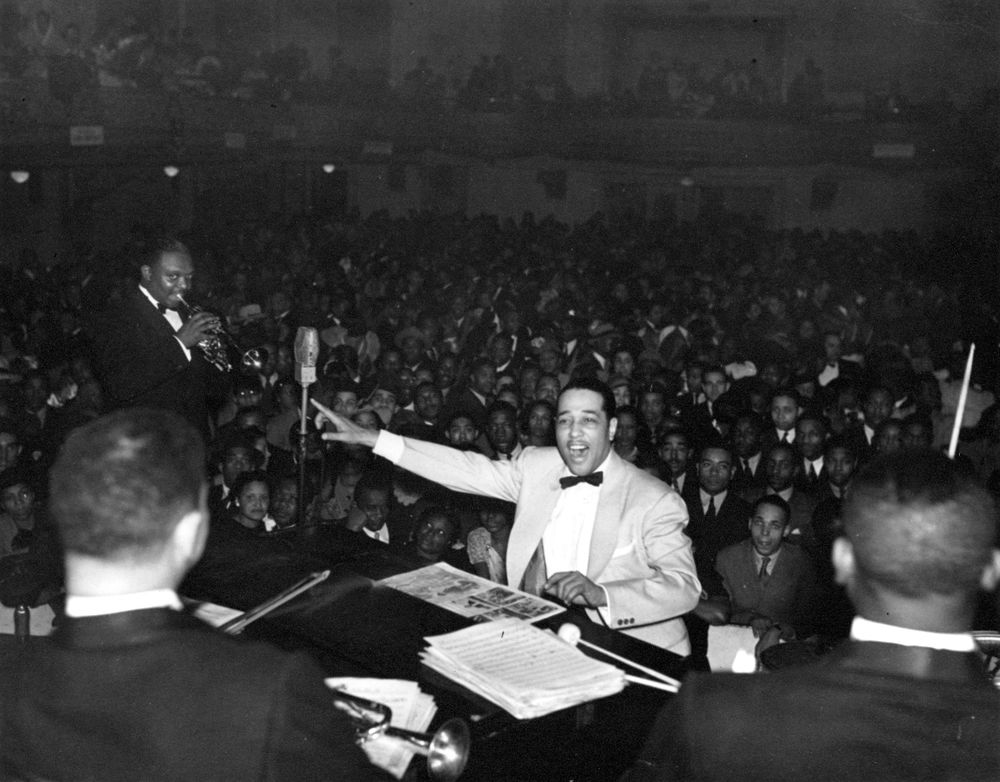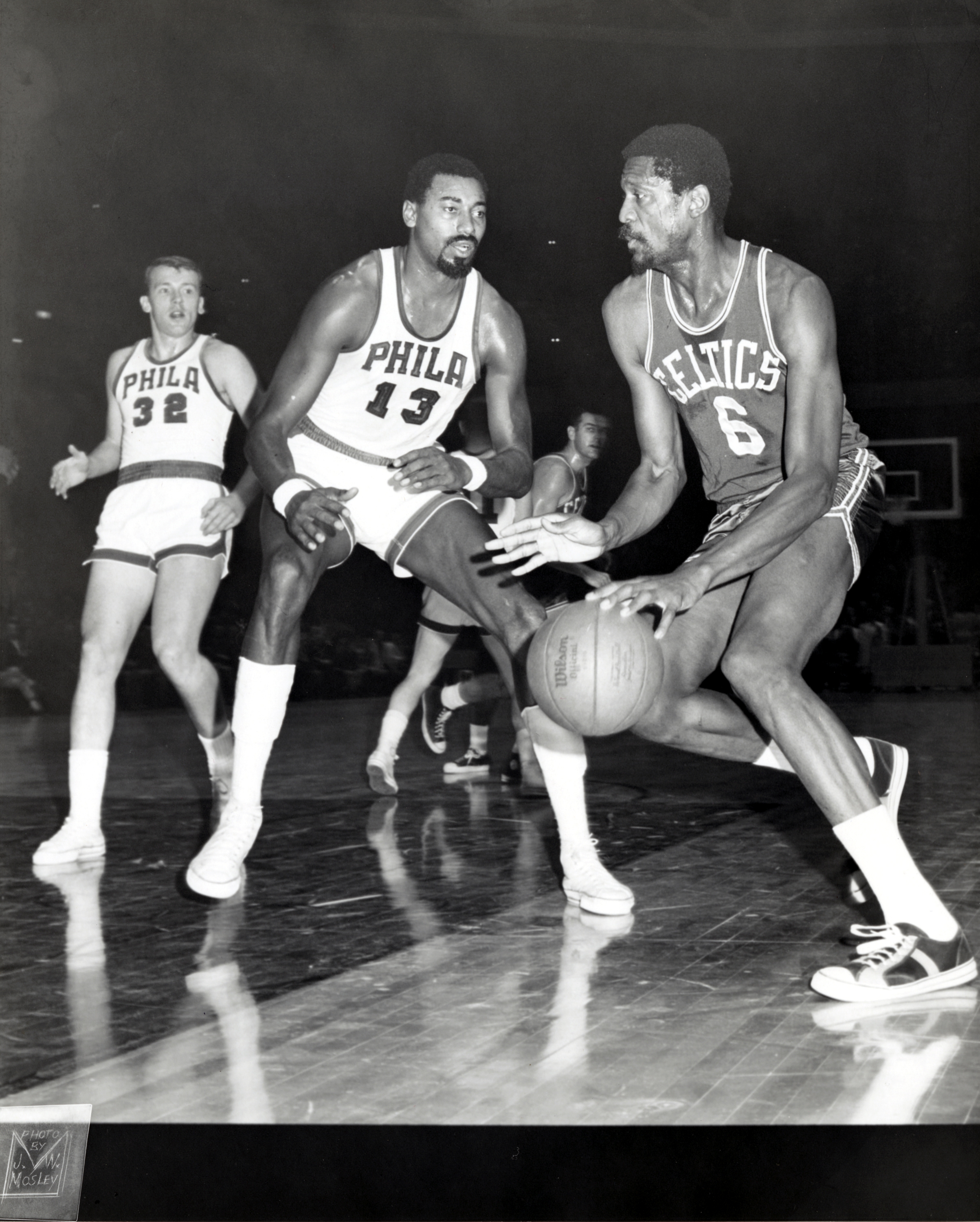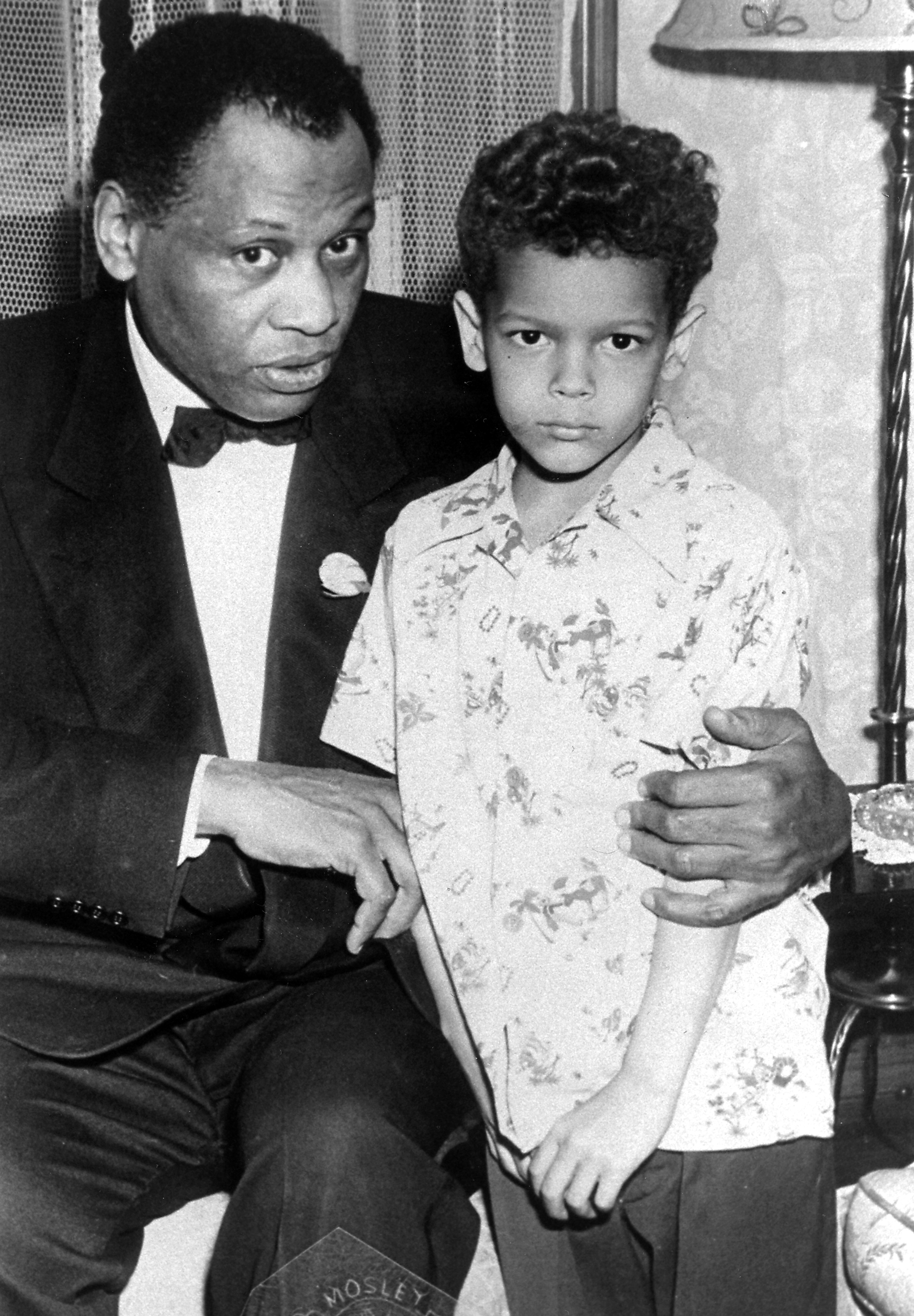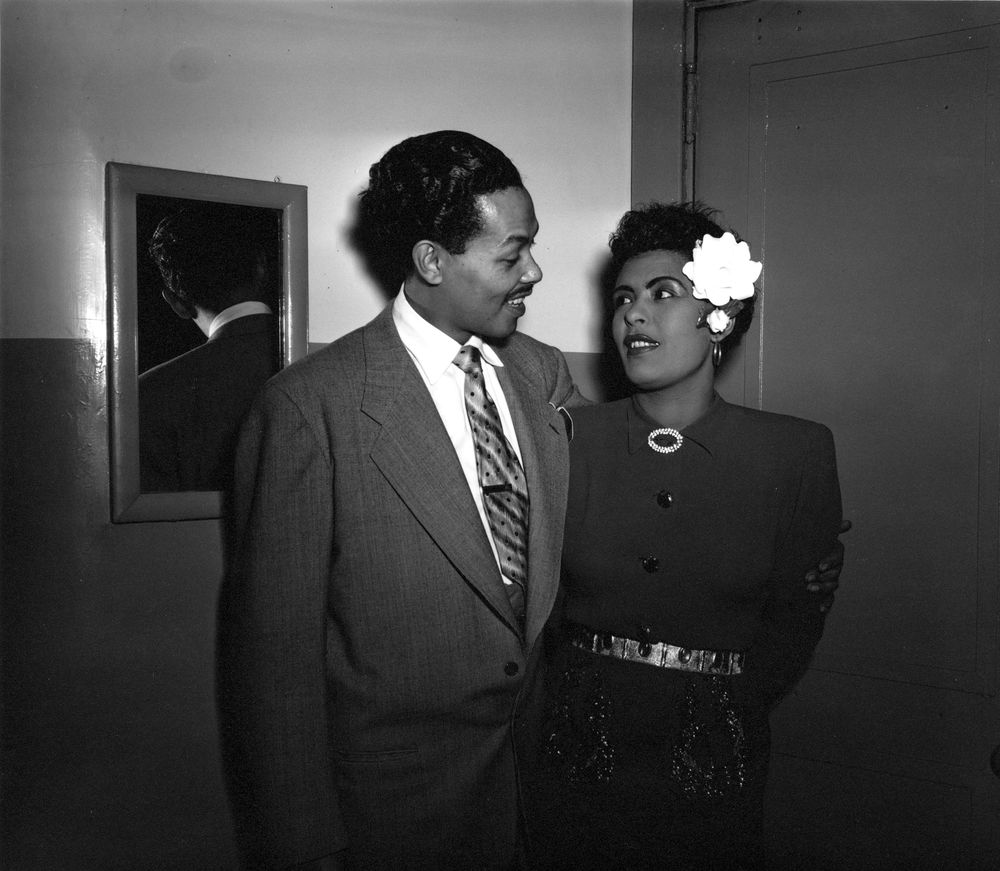Photos give inside view of African-American life from 1930s to 1960s
Four glamorous women pose in their 1940s-style bathing suits on Chicken Bone Beach in Atlantic City. A nattily-dressed group laugh together at a Pyramid Club garden party. Jazz vocalist Billie Holiday gazes up at singer and bandleader Billy Eckstine at Philly’s Earle Theater on Market Street. These intimate scenes of African-American culture and life, captured by the prolific photographer John W. Mosley, are now on exhibit at the Philadelphia International Airport.
The 55 photos on view vetted from the more than 300,000 images that comprise Mosley’s life’s work, bring one of the most treasured assets of the Charles L. Blockson Afro-American Collection at Temple University Libraries to the millions of travelers who pass through the airport.
At the opening reception for the exhibit, Diane Turner, curator of the Blockson Collection, called both Mosley and Blockson cultural warriors.
“John W. Mosley was documenting the African-American community during a period from the 1930s through the 1960s when there were many stereotypical images of African Americans,” said Turner. “Mr. Blockson understood the importance of preserving the Mosley photographs and making them accessible because they represented an accurate record of Black Philadelphia. He has been on the forefront in the struggle to eradicate negative stereotypes and false interpretations of African American history and culture in Philadelphia and Pennsylvania as well as empower African Americans to tell their own stories.”
Airport director of exhibitions Leah Douglas said she is always looking for art shows that will tout Philadelphia and the Blockson Collection’s Mosley photos fit the bill perfectly.
“They are photos of Philadelphians, taken by a Philadelphia photographer, that are housed in a Philadelphia collection,” said Douglas. “It’s completely Philadelphia-centric.”
Turner, Douglas and Leslie Willis-Lowry, archivist of the Blockson Collection, worked together to select photos that highlighted five aspects of African-American life in Philadelphia: Atlantic City as a summer destination, entertainers, leaders and innovators, sports figures and family/social gatherings.
John W. Mosley (1907-1969), a self-taught Philadelphia photojournalist, was known to photograph up to four events, every day, often working seven days a week. His work was published in numerous African-American newspapers including the Philadelphia Tribune; he captured the daily activities of Philadelphia’s black community.
“It was Mosley’s intention to represent his proud heritage and to rightfully portray African Americans in a positive manner during a difficult time of racism and segregation,” said Willis-Lowry.
The Mosley photographs came to Temple in 1991 when they were donated to Charles L. Blockson, the founder of the Blockson Collection. Located in Sullivan Hall on Temple’s Main Campus, the Blockson Collection is one of the nation’s largest private collections on the history and culture of people of African descent.
Blockson acquired the Mosley photos from his friend, Clarence Still, a member of one of South Jersey’s most well-known African-American families. Still's sister, Theresa, was the wife of John W. Mosley.
Blockson, 79, who was honored by Mayor Michael Nutter’s Office at the opening reception, recalled the people and places brought to life by the photos on exhibit, such as Atlantic City, where Mosley took more than 25,000 pictures.
“These pictures bring back such memories,” said Blockson. “Every weekend we’d go to Atlantic City. Does anyone remember Chicken-bone beach? How about Glamour Row? That was where all the beautiful women congregated. There was also Club Harlem.”
For Blockson, the Mosley exhibit is part of his life-long quest to preserve the history and culture of African-Americans and make it accessible to students, scholars and the public.
On exhibit between terminals E and F at the Philadelphia International Airport “A Celebration of African-American Life in Philadelphia, 1930's - 1960's: Selected Photographs by John W. Mosley” is open to the public through August 2012.



